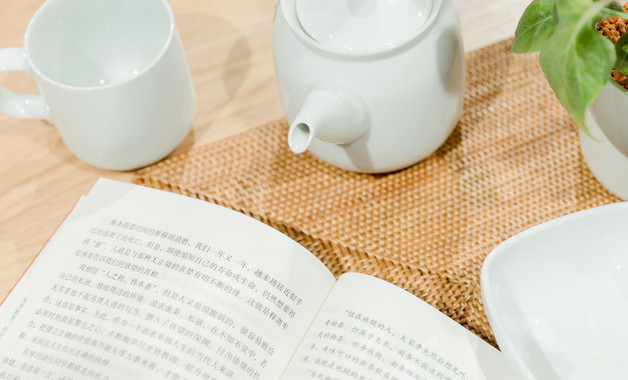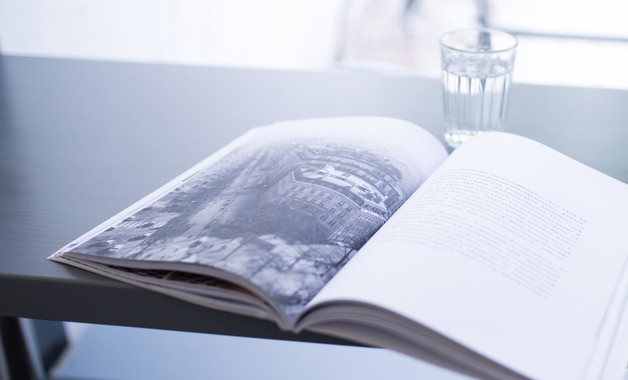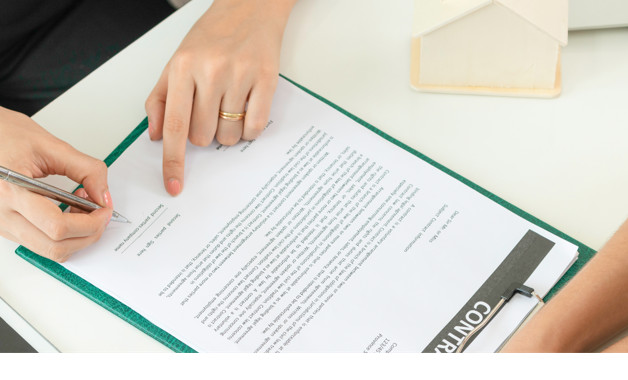北京导游词英语

第1篇 北京导游词英语
阅读小贴士:本篇共计1111个字,预计看完需要3分钟,共有243位用户收藏,13人推荐!
beijing, formerly known as peking, was the capital of the yuan dynasty asearly as 1271. hundreds of years later, beijing, as the imperial capital, is nowmore prosperous.
people who come to beijing for the first time by train will feel that therailway station is very busy and the bus is very convenient. it is said that thebus in beijing has the longest bus length and the most bus routes in china. butbecause traffic jams are frequent, it is not the best choice to travel inbeijing by bus. beijing's subway line through the city underground, as many as adozen, there is no traffic jam, is the preferred way of travel for the vastmajority of people.
in beijing, the most worry is playing. there are many scenic spots inbeijing, such as tiananmen square, the great wall, the forbidden city, thesummer palace, xiangshan, happy valley, the zoo, yonghe palace, prince gong'smansion, the temple of heaven, the temple of earth, lugou bridge, the chinaworld monument, the new site of cctv, and so on. when i come to beijing for thefirst time, it is estimated that it will take me a month to enjoy all thesescenic spots. in other cities, it may cost a lot of money to visit places ofinterest, but in beijing, it's not expensive. for example, in the peak season ofbadaling, it's 45 yuan, in the zoo, it's 50 yuan, and half price for students.tiananmen square, china century monument and other attractions are free ofcharge. although admission fees for scenic spots are not high, accommodation inbeijing is very expensive. generally, the price of a small hotel is tens of yuana night, that of a slightly larger hotel is more than 100 yuan, and that of astandard room in a medium-sized hotel is about 200-300 yuan. if you want to stayin beijing for a few more days, you'd better go together and rent a short-termsuite in advance, which can save a lot of money.
北京原名北平,早在公元1271年,元朝就定都于此,几百年过去了,身为帝都的北京如今更加的繁华。
坐火车初次来来北京的人,都会觉得火车站很热闹,公交很便捷。据说北京的公交是我国城市公交车车长最长的,公交线路最多的,但因为堵车是时经常的事,所以在北京出行坐公交并不是最佳的选择。北京的地铁线贯通城市地下,多达十几条,还没有堵车的困扰,是绝大多数人首选的出行方式。
在北京,最不愁的就是玩。北京的景点很多,如天安门、长城、故宫、颐和园、香山、欢乐谷、动物园、雍和宫、恭王府、天坛、地坛、卢沟桥、中华世界坛、中央电视台新址,等等。初次来到北京,要想把这些景点都尽兴的游览一遍,估计需要一个月的时间。游览名胜古迹,在其他的城市门票可能是笔不小的花费,但在北京门票并不算贵,像八达岭门票旺季45元,动物园50元,学生半价;天安门、中华世纪坛等景点还是免费进入的。景点门票虽然收费不高,但寸土寸金的北京住宿却很贵。一般的小旅社价格要几十元一晚,稍微大一点的宾馆价格要一百多元,中等酒店宾馆的标准间价格要在二百到三百元左右。建议去北京游玩的人们,如果想多留几天最好结伴而行,事先租好短期租用的套房,这样可以省下不少钱。
第2篇 北京导游词英语
阅读小贴士:本篇共计904个字,预计看完需要3分钟,共有280位用户收藏,19人推荐!
北京故宫英语导游词
ladies and gentlemen:
i am pleased to serve as your guide today.
this is the palace museum; also know as the purple forbidden city. it is the largest and most well reserved imperial residence in china today. under ming emperor yongle, construction began in 1406. it took 14years to build the forbidden city. the first ruler who actually lived here was ming emperor zhudi. for five centuries thereafter, it continued to be the residence of23 successive emperors until 1911 when qing emperor puyi was forced to abdicate the throne .in 1987, the united nations educational, scientific and cultural organization recognized the forbidden city was a world cultural legacy.
it is believed that the palace museum, or zi jin cheng (purple forbidden city), got its name from astronomy folklore, the ancient astronomers divided the constellations into groups and centered them around the ziwei yuan(north star). the constellation containing the north star was called the constellation of heavenly god and star itself was called the purple palace. because the emperor was supposedly the son of the heavenly gods, his central and dominant position would be further highlighted the use of the word purple in the name of his residence. in folklore, the term ”an eastern purple cloud is drifting” became a metaphor for auspicious events after a purple cloud was seen drifting eastward immediately before the arrival of an ancient philosopher, laozi, to the hanghu pass. here, purple is associated with auspicious developments. the word jin (forbidden) is self-e_planatory as the imperial palace was heavily guarded and off-e_planatory as the imperial palace was heavily guarded and off-limits to ordinary people.
the red and yellow used on the palace walls and roofs are also symbolic. red represents happiness, good fortune and wealth. yellow is the color of the earth on the loess plateau, the original home of the chinese people. yellow became an imperial color during the tang dynasty, when only members of the royal family were allowed to wear it and use it in their architecture.
the forbidden city is rectangular in shape. it is 960 meters long from north to south and 750 meter wide from east west. it has 9,900 rooms under a total roof area 150,000 square meters .a 52-meter-wide-moat encircles a 9.9-meter—high wall which encloses the comple_. octagon —shaped turrets rest on the four corners of the wall. there are four entrances into the city: the meridian gate to the south, the shenwu gate(gate of military prowess) to the north, and the _ihua gate(gate of military prowess) to the north, and the _ihua gate(western flowery gate )to the west ,the donghua (eastern flowery gate) to the east.
第3篇 北京导游词英语
阅读小贴士:本篇共计309个字,预计看完需要1分钟,共有113位用户收藏,25人推荐!
大家好,我姓成,你们可以叫我成导,这次由我带领大家参观颐和园!
首先,由我来为大家简单地讲述一下。颐和园,位于北京的西北郊,原是清代的皇家园林和行宫。其前身清漪园始建于1750年,1764年建成,1860年被英法联军焚毁。1866年,慈禧挪用海军经费和其他款项重建,并于1888年改名颐和园。192022年,颐和园又遭八国联军严重破坏,192022年再次修复。好了,颐和园到了,大家请随我去游览一番吧。看,我们已经来到了长廊,绿漆的柱子,红漆的栏杆,一眼望不到头。这条长廊有七百多米长,分成273间。横槛上画着人物、花草、风景,几千幅画没有哪两幅是相同的。走完长廊,我们再来到万寿山脚下,大家请看,那儿就是佛香阁,下面的是排云殿。
现在大家自由活动,2小时候后在这里集合!
第4篇 北京导游词英语
阅读小贴士:本篇共计2402个字,预计看完需要7分钟,共有205位用户收藏,13人推荐!
北京故宫导游词作文450字
导语:1949年中华人民共和国成立以后,对故宫建筑进行了大规模的修缮,同时整理出大量的文物。1961年国务院颁布故宫为全国重点文物保护单位。故宫博物院现存文物150万件(套)。[17] 1987年故宫被联合国教科文组织列为“世界文化遗产”,辟为“故宫博物院”。
北京故宫导游词作文450字
大家好,我是你们的郭导。这次由我带大家走进北京故宫。故宫是世界五大宫之首,又称紫禁城。是清、明两代的皇宫,是世界上现存最大,最完整的古建筑群。总面积达725平方米。大家想想看,故宫就相当于20个足球场那么大。经过专家测量,故宫有打大小院90多座,房屋980多座共8070间。
大家现在正前方的巨大红墙就是故宫的大门,它高12米,可想而知,它就是故宫的第一道防线。大家看,经过几百年的风吹雨打,它还是那么鲜红。大家可以看到大红色的城墙上露出一点黄色琉璃瓦屋顶,当时,黄色是皇家才能用的。现在大家跟我走进故宫。小心门槛哦。
现在大家来到的是清、明带出庭时官员们站的广场,官员站的位置也很有讲究:文官站右,武官站左。大家脚底下踏着的石板上,会看见精雕细琢的图案,它是三角形旋转而成的。大家请跟我走
现在来到的就是故宫著名的景点之一——九龙壁。大家可以看到一面壁上有九只龙在海面飞腾,龙的颜色之所以十分鲜艳,是因为它们是由上等釉染的。瞧,那只黄龙居中,前爪作出环抱的样子,后足分撅海水,龙身弯曲,瞠目张颌,好像在与我们宣战。两旁的白龙背道而驰,双眼炯炯有神地盯着黄龙,好像愤愤不平。为什么黄龙可以正居中央,我也要!大家参观时不要摸,这样颜色会脱掉的,爱护文物,从我做起!让我们再逛一圈。
(玩了一会)
本次旅游到此结束,谢谢各位参观,再见!
北京故宫导游词作文450字
大家好!我是本次导游赵虹杰,大家一定都知道北京的故宫吧?没错!北京故宫是享誉世界的历史遗产,是明、清两代的皇宫,也是世界现存最大、最完整的古建筑群。被誉为世界五大宫之首。它位于北京市中心,旧称紫禁城。接下来就让我带大家去游览一番吧……
由天安门进入,穿过一片青砖铺地的广场,便到达紫禁城的正门——午门。故宫有4个门,正门名午门,东门名东华门,西门名西华门,北门名神武门。午门俗称五凤楼,穿过午门,有广阔的大庭院,在3万多平方米开阔的庭院中,有五座精巧的汉白玉拱桥通往太和门。到了太和门,就进入了故宫的 “外朝”,故宫的建筑依据其布局与功用分为“外朝”与“内廷”两大部分。外朝以太和、中和、保和三大殿为中心,是皇帝举行朝会的地方,也称为“前朝”。过桥经过太和门便是雄伟的太和殿。这座殿堂有着一段曲折的故事,听说它被天火焚毁过三次,也修好过三次,而且更神奇的是整座宫殿的建造居然没有一颗钉子!内廷以乾清宫、交泰殿、坤宁宫后三宫为中心,两翼为养心殿、东、西六宫,绕过内廷,我们最后来到了御花园,御花园里栽满了奇花异草。一路走来,会闻到一阵阵淡淡的花香。是封建帝王与后妃居住所。
游览故宫,可以从天安门进,也可以由后门——神武门进经太和殿、中和殿、保和殿,穿过乾清门,便进入内廷,内廷分中路、东路和西路三条路线。如果是半日游,这三条路线只能游一条,一般可走中路。走中路可看乾清宫、交泰殿、坤宁宫、嫔妃所住的地方和御花园。一般来说,用半天时间游故宫,比较吃力,想要知识更广,大家就再细细去游赏吧!
北京故宫导游词作文450字
大家好,我是北京旅行社的导游,名叫成思瑶,欢迎来自济南的朋友来到北京参观故宫,我会陪同大家一起游览故宫,大家在参观的过程中有疑问的地方可以问我。
故宫建于公元1406年,南北长961米,东西宽763米,面积约723600平方米,大小院子有90多座,房屋有980多座,共计7078间。故宫的前半部分建筑形象是严肃、庄严、壮丽、雄伟的,以象征皇上的至高无上。后半部分叫内廷,则富有生活气息,建筑多事自成院落,有花园、书斋、馆榭、山石等。
现在我们马上就到乾清宫了。乾清宫是内廷的'正殿,高20米,殿的正中央有宝座,内有“正大光明”匾,两头有暖阁。清康熙前此处为皇帝居住和处理政务之处。清雍正后皇帝移居养心殿,但仍在此处批阅奏折、选派官吏和召见下臣。请大家注意,在解散之后,不要随便触摸这些古老的文物,以防破损。
下面我们要去御花园,请大家排好队。
御花园里有高耸的松柏,珍贵的花木、山石和亭阁。御花园原名叫宫后苑,占地11000多平方米,有建筑20余处。以钦安殿为中心,园林建筑采用主次相辅、左右对称的格局,布局紧凑,古典富丽,可以说是保存的古亭中最为华丽的花园了。注意事项:如果大家有垃圾,请及时扔到垃圾箱里,不要丢在故宫里。
谢谢大家今天的参观,再见!
北京故宫导游词作文450字
各位游客你们好,这次由我带领你们去北京故宫,我叫孔繁鹭,希望我能带给大家最好的服务。不过现在我要提几点要求:1。要保管好自己的贵重物品;2。如果迷路,请马上给我打电话不要离开;3。一定要保护环境。好了,我的要求提完了,请您自觉遵守,谢谢合作!
首先我给大家做一简要介绍,故宫位于北京中心,旧称紫禁城,是明、清两代的皇宫,是当今世界现存规模最大、最雄伟、保存最完整的古代宫殿。至少已有近580年历史了。故宫规模宏大,东西宽为753米,南北长达961米,总占地面积达72万平方米,大约一共有一万间宫室。
各位游客,现在展现在我们眼前的就是气势雄伟的古代宫殿故宫。大家看着四面就是宫墙,四周都是高大的城门,南为午门,北为神武门,东为东华门,西为西华门。
现在请大家跟我一起去故宫中最大的宫殿太和殿看看吧!这里是皇帝上朝的地方,再看那边,中间的是汉白玉雕刻的“双龙戏珠”,两边是汉白玉台阶;台阶的左边是一只乌龟,右边是一只仙鹤,这象征着延年益寿。
我再给大家介绍介绍其他殿吧!现在我们来到了中和殿,中和殿是为帝王去太和殿途中学礼仪之地,保和殿呢?它是由多根红色巨柱支撑着,每根柱上都刻着一条栩栩如生的巨龙,十分壮观,我们再来看看文华殿吧!他是明代皇太子的读书处。乾清门是故宫中外朝和内延的分界处,由此向北就是延。
好了,这次游览结束,希望你们再次观赏我国的其它景物并且祝你们玩的愉快!
第5篇 北京导游词英语
阅读小贴士:本篇共计518个字,预计看完需要2分钟,共有185位用户收藏,27人推荐!
你们好!我叫许诚,是你们导游,大家可以叫我许导,也可以叫我小许。我们即将游览的是颐和园。
颐和园是清代皇家园林,是我国重点文物单位,已被列入《世界遗产名录》。
颐和园位于北京的西北郊,其前身清漪园始建于1750年,1764年建成,1860年被英法联军焚毁。1886年,慈禧太后挪有海军经费和其他款项重建,并与1888年改为颐和园。1900年,颐和园又遭八国联军严重破坏,1902年再次修复。好了,咱们现在开始游览吧。
我们首先要来到最有名的长廊。大家看,绿漆的柱子,红漆的栏杆,多美呀!这条长廊有700多米,分为273间,每件横槛上都有画。你们相信吗?上千幅的画没有哪两幅是相同的
现在我们在万寿山脚下,抬头仰望,那座八角宝塔形的建筑,就是佛香阁。下面一排排金碧辉煌的宫殿,就是排云殿。上万寿山吧!
现在我们已经登上了万寿山,是欣赏颐和园全景的最佳位置。正前面就是昆明湖,有人常说它像一面镜子,像一块碧玉。不知你们是否有同感。下面就去昆明湖吧。
看,昆明湖多大,但堤岸更长。看见那/个小岛了吗/?我们走过长长的石桥就可以到到上玩。请大家仔细数数这座桥的桥洞,一共有十七个桥洞所以叫十七孔桥。桥柱上的石狮子姿态不一,没有哪两只是相同的。
另外,还有月波楼,石舫等。我说也说不仅,请你们自己慢慢游赏吧!
第6篇 北京导游词英语
阅读小贴士:本篇共计2413个字,预计看完需要7分钟,共有153位用户收藏,15人推荐!
北京导游词英语作文
北京导游词英语作文1
tian'anmen (the gate of heavenly peace), is located in the center of beijing. it was first built in 1417 and named chengtianmen (the gate of heavenly succession). at the end of the ming dynasty, it was seriously damaged by war. when it was rebuilt under the qing in 1651, it was renamed tian'anmen, and served as the main entrance to the imperial city, the administrative and residential quarters for court officials and retainers. the southern sections of the imperial city wall still stand on both sides of the gate. the tower at the top of the gate is nine-room wide and five –room deep. according to the book of changes, the two numbers nine and five, when combined, symbolize the supreme status of a sovereign. during the ming and qing dynasties, tian'anmen was the place where state ceremonies took place. the most important one of them was the issuing of imperial edicts, which followed these steps:
1) the minister of rites would receive the edict in taihedian (hall of supreme harmony), where the emperor was holding his court. the minister would then carry the decree on a yunpan (tray of cloud), and withdraw from the hall via taihemen (gate of supreme harmony)
2) the minister would put the tray in a miniature longting (dragon pavilion). beneath a yellow umbrella and carry it via wumen (meridian gate), to tian'anmen gate tower. 3) a courtier would be invested to proclaim the edict. the civil and military officials lining both sides of the gateway beneath the tower would prostrate themselves in the direction of the emperor in waiting for the decree to the proclaimed.
4) the courtier would then put the edict in a phoeni_-shaped wooden bo_ and lower it from the tower by means of a silk cord. the document would finally be carried in a similar tray of cloud under a yellow umbrella to the ministry of rites.
5) the edict, copied on yellow paper, would be made known to the whole country. such a process was historically recorded as " imperial edict issued by golden phoeni_". during the ming and qing dynasties tian'anmen was the most important passage. it was this gate that the emperor and his retinue would go through on their way to the altars for ritual and religious activities.
on the westside of tian'anmen stands zhongshanpark (dr. sun yat-sen's park), and on the east side, the working people's cultural palace. the park was formerly called shejitan (altar of land and grain), built in 1420 for offering sacrificial items to the god of land. it was opened to the public as a park in 1914 and its name was changed in 1928 to the present one in memory of the great pioneer of the chinese democratic revolution. the working people's cultural palace used to be taimiao (the supreme ancestral temple), where tablets of the deceased dynastic rulers were kept.
the stream in front of tian'anmen is called waijinshuihe (outer golden river), with seven marble bridges spanning over it . of these seven bridges, historical records say the middle one was for the e_clusive use of the emperor and was accordingly called yuluqiao (imperial bridge). the bridges flanking it on either side were meant for the members of the royal family and were therefore called wanggongqiao (royal's bridges). farther away on each side of the two were bridges for officials ranking above the third order and were named pinjiqiao (ministerial bridges). the remaining two bridges were for the use by the retinue below the third order and were called gongshengqiao (common bridges). they are the one in front of the supreme ancestral temple to the east and the one in front of the altar of land and grain to the west.
北京导游词英语作文2
tian'anmen(the gate of heavenly peace), is located in the center of beijing. it was first built in 1417 and named chengtianmen(the gate of heavenly succession)。 at the end of the ming dynasty, it was seriously damaged by war. when it was rebuilt under the qing in 1651, it was renamed tian'anmen,and served as the main entrance to the imperial city,the administrative and residential quarters for court officials and retainers. the southern sections of the imperial city wall still stand on both sides of the gate. the tower at the top of the gate is nine-room wide and five–room deep. according to the book of changes,the two numbers nine and five,when combined,symbolize the supreme status of a sovereign. during the ming and qing dynasties, tian'anmen was the place where state ceremonies took place. the most important one of them was the issuing of imperial edicts, which followed these steps:1) the minister of rites would receive the edict in taihedian(hall of supreme harmony),where the emperor was holding his court. the minister would then carry the decree on a yunpan(tray of cloud),and withdraw from the hall via taihemen(gate of supreme harmony)2)the minister would put the tray in a miniature longting(dragon pavilion)。 beneath a yellow umbrella and carry it via wumen(meridian gate),to tian'anmen gate tower. 3)a courtier would be invested to proclaim the edict. the civil and military officials lining both sides of the gateway beneath the tower would prostrate themselves in the direction of the emperor in waiting for the decree to the proclaimed.3)the courtier would then put the edict in a phoeni_-shaped wooden bo_ and lower it from the tower by means of a silk cord. the document would finally be carried in a similar tray of cloud under a yellow umbrella to the ministry of rites.4)the edict,copied on yellow paper,would be made known to the whole country. such a process was historically recorded as
waijinshuihe(outer golden river),with seven marble bridges spanning over it . of these seven bridges,historical records say the middle one was for the e_clusive use of the emperor and was accordingly called yuluqiao(imperial bridge)。 the bridges flanking it on either side were meant for the members of the royal family and were therefore called wanggongqiao(royal's bridges)。farther away on each side of the two were bridges for officials ranking above the third order and were named pinjiqiao(ministerial bridges)。the remaining two bridges were for the use by the retinue below the third order and were called gongshengqiao(common bridges)。they are the one in front of the supreme ancestral temple to the east and the one in front of the altar of land and grain to the west.the two stone lions by the gate of tian'anmen,one on each side were meant as sentries. they gaze toward the middle a_is,guarding the emperor's walkway. in front of the gate stands a pair of marble columns called huabiao. they are elaborately cut in bas-relief following
the pattern of a legendary dragon. behind the gate stands another pair of similar columns. the story of huabiao may be traced to a couple of sources. one of the versions accredits its invention to one of the chinese sage kings named yao,who was said to have set up a wooden pillar in order to allow the ordinary people to e_pose evil-doers, hence it was originally called a slander pillar. later it was reduced to a signpost,and now it serves as an ornament.the beast sitting on the top of the column is called
第7篇 北京导游词英语
阅读小贴士:本篇共计1602个字,预计看完需要5分钟,共有128位用户收藏,21人推荐!
beijing is located at 39 ° 56 ′ n and 116 ° 20 ′ e. it is located at thenorthwest end of the north china plain, in the west, north and northeast. it issurrounded by taihang mountain (west mountain), jundu mountain and yanshanmountain, which makes it look like a "bay", so it has been called "beijing bay"since ancient times.
beijing, the capital of the people's republic of china, is the center ofpolitics, culture, transportation, tourism and international exchanges. the cityconsists of 11 districts and 7 counties. the total area is 16800 squarekilometers, of which the urban area covers 1040 square kilometers. thepopulation is 11.5 million. beijing is the first of the four municipalitiesdirectly under the central government in china.
beijing has a north temperate continental monsoon climate with fourdistinct seasons. spring flowers, autumn moon, summer rain and winter snow arethe different characteristics of each season. no matter when you come to beijingfor sightseeing, you will have charming wind colors. beijing has shorter springand autumn, longer summer and winter. january is colder, the average temperatureis - 4.7 ℃, july is slightly hot, the average temperature is 26.1 ℃. the averageannual rainfall is 650 mm and the frost free period is 180 days. it has aprominent geographical location, magnificent mountains and rivers, fertile landand rich products, so it has always been regarded as the treasure land ofchina.
beijing has a written history of more than 3000 years and a long history ofurban construction. as far back as 700000-500000 years ago, this is thebirthplace of human ancestors, and peking man has been breeding in zhoukoudianand other places in southwest beijing. in 586 bc, the state of yan, the marquisof the zhou dynasty, established its capital here, named "ji". from then on, thename of "yanjing" has been passed down to the present. after the third centuryb.c., it was an important northern town in the qin, han, sui and tang dynasties.at the beginning of the 10th century, the qidan people in northeast chinaestablished the liao dynasty and took it as the capital, nanjing. in 1125, thenuzhen nationality rose, destroyed the liao dynasty and built the jin dynasty.it officially established its capital, named zhongdu, and built 36 luxuriouspalaces. the central capital was in the area of guang'anmen today, but it wasdestroyed in 1215. in this year, the mongols in the north of china movedsouthward, successively destroyed the jin dynasty and the southern song dynasty,which avoided hangzhou, and unified china. in 1267, the yuan dynasty rebuilt thecapital city with the jindynasty daning palace (now beihai park) as the center,and renamed it dadu, which is the predecessor of today's old beijing city. in1368, the peasant uprising army led by zhu yuanzhang overthrew the yuan dynastyand established the ming dynasty. the capital of the ming dynasty was located innanjing, which was renamed beiping. in 1403, zhu di won the throne, moved hiscapital to peking, and changed its name to beijing. after 15 years ofconstruction, the forbidden city was completed in 1420 and the capital wasofficially moved to beijing in 1421. in 1644, the qing army entered the pass,the ming dynasty perished, and the qing dynasty also established its capital inbeijing. each dynasty has established its capital here for more than 800 years.after the founding of new china in 1949, the old beijing gained a new life andwas determined as the capital of new china.
the ancient city of beijing, after the great creation of the working peopleof the past dynasties, has left a splendid culture of the chinese nation. thearchitectural layout of the whole city takes the forbidden city as the centerand runs through an 8 km long central axis from south to north. before and afterthe dynasty, zuozu and youshe (taimiao and sheji altar); the streets arevertical and horizontal, the temples are brilliant; the temples are magical, thegardens are magnificent; the rivers and lakes are winding, the scenery ispicturesque. the whole city has both plane layout and three-dimensional shape,which is not only a model of chinese ancient capital, but also occupies a veryimportant position in the history of world urban construction. beijing hasalways been famous for its rich places of interest and charming natural scenery.here are the world's wonders of the great wall, the world's most imperial palacecomplex, beautiful classical gardens, as well as magnificent temples,mausoleums, pagodas, stone carvings and so on. moreover, shidu, songshan,longqing gorge, shihua cave and other natural landscapes, as well as manyhistorical sites such as the may 4th movement in 1919, are all touristattractions that people can enjoy and forget to return.
第8篇 北京导游词英语
阅读小贴士:本篇共计427个字,预计看完需要2分钟,共有236位用户收藏,25人推荐!
is the birthplace of chinese civilization and one of the six ancientcapital cities in china. during the last 3000 years it served as a capital forseveral dynasties. it is the second largest city in china with a population ofmore than 11 million. is neither cold in winter nor very in summer. the bestseasons in are spring and autumn. beijing is indeed an ideal place to visit allround the year.
temple of heaven in the southern part of beijing is china`s largestexisting complex of ancient sacrificial buildings. occupying an area of 273hectares, it is three times the area of the forbidden city. it was built in 1420for emperors to worship heaven. the principle buildings include the altar ofprayer for good harvests, imperial vault of heaven and circular mound altar.
forbidden city, so called because it was off limits to commoners for 500years, is the largest and best-preserved cluster of ancient buildings in china.it was home to two dynasties of emperors -the ming and the qing - who didntstray from this pleasure dome unless they absolutely had to.
great wall of china, also know n to the chinese as the 10,000 li wall, thegreat wall of china stretches from shanhaiguan pass on the east coast tojiayuguan pass in the desert. standard histories emphasize the unity of thewall.
第9篇 北京导游词英语
阅读小贴士:本篇共计490个字,预计看完需要2分钟,共有163位用户收藏,13人推荐!
respected tourists:
it seems that everyone is very energetic. today we are going to visit thegreat wall. please be prepared. the great wall is the longest building in china.it is also the most famous building in china. its length reaches more than 13000li. we often call it the great wall.
first of all, we came to the foot of the great wall. you see, the the greatwall is so tall and strong that it uses huge stones and brick. the top of thecity wall is paved with square tiles. it is very smooth. like a wide road, fiveor six horses can be parallel.
do you see a hole in the tooth, a small square, and a fortress? let me tellyou what the three things are for? that hole like a tooth! it's called a look. ithink you must know why it calls it? i'll tell you, when the war was, the eightuncle came to see the situation, that small square. the shape is called anarchery. it is used for archery. that fort is used for city platforms to echoeach other.
everyone is tired, is it hungry? can i eat a bit of food, i send you a bagfor garbage, remember not to throw rubbish, i'll tell you a story about thegreat wall: qin shihuang fought a lot before, and then he thought of buildingthe great wall, so he took all the men of qin state to catch the the great wall,qin shihuang was afraid that the men would run away, so he tied the feet of themen together. how many laboring people's sweat and wisdom is the only way toform the the great wall that has never seen before or after.
第10篇 北京导游词英语
阅读小贴士:本篇共计3952个字,预计看完需要10分钟,共有280位用户收藏,11人推荐!
beijing is the capital of the people's republic of china, a municipalitydirectly under the central government, a national central city of china, and acenter for political, cultural, educational and international exchanges. it isalso the decision-making center and management center of china's economy andfinance. beijing is located in the north end of the north china plain, connectedwith tianjin in the southeast, and the rest is surrounded by hebei province.with a history of more than 3000 years and a history of more than 850 years,beijing is one of the "four ancient capitals of china" and has a certaininternational influence. its earliest name in literature is "ji". beijing is acity with the largest number of world cultural heritages in the world. beijingis also one of the areas with the most rainfall in north china. pekinguniversity and tsinghua university are also located in beijing.
beijing has the largest number of world heritage sites (6) in the world,and is the first capital city with world geoparks in the world. beijing is richin tourism resources. there are more than 200 tourist attractions open to theoutside world, including the world's largest imperial palace, forbidden city,temple of heaven, royal garden beihai, royal garden summer palace andyuanmingyuan, as well as badaling great wall, mutianyu great wall and theworld's largest siheyuan palace, prince gong's mansion. the city has 7309cultural relics and historic sites, 99 national key cultural relics protectionunits (including the beijing section of the great wall and the beijing hangzhougrand canal), 326 municipal cultural relics protection units, 5 nationalgeoparks and 15 national forest parks. world cultural heritage: the forbiddencity, the great wall, zhoukoudian peking man site, the temple of heaven, thesummer palace and the ming tombs. world geopark: fangshan world geopark,beijing. national scenic spots: badaling, ming tombs and shihua cave. famousstreets of chinese history and culture: guozijian street and yandaixie street. afamous historical and cultural town in china: gubeikou town, miyun county. afamous historical and cultural village in china. mentougou district: cuandixiavillage of zhaitang town, lingshui village of zhaitang town, liuliqu village oflongquan town.
in the western zhou dynasty, it became the capital of yan, one of thevassal states of the zhou dynasty. since the jin dynasty, it has become thecapital of ancient china. since the yuan dynasty, it has become the capital ofchina. the ming dynasty began to expand beijing on a large scale after becomingits ancestor. during the ming dynasty, beijing became the capital of the firsthan dynasty. the qing dynasty carried out some renovation and expansion on thebasis of the continuation of the ming dynasty beijing city. at the end of theqing dynasty, beijing became the largest city in the world. beijing has ahistory of 3000 years and 859 years. since the qin and han dynasties, beijinghas been an important military and commercial city in northern china. in 1860,the allied forces of britain and france invaded beijing; in 1900, the alliedforces of the eight countries invaded beijing again. the beautiful city ofbeijing was seriously damaged and looted, and a large number of cultural relicswere looted by the invading forces and the bad people. after the 1911revolution, on january 1, the first year of the republic of china, the capitalof the republic of china was nanjing. in march of the same year, the capital ofthe republic of china was moved to beijing. until the 17th year of the republicof china, the northern expedition army captured beijing, zhang zuolin wasdefeated and returned to the northeast, and the beiyang government stepped down.at the beginning of the republic of china, the local system of beijing was stillin accordance with the qing system, which was called shuntianfu.
until the third year of the republic of china, shuntianfu was changed tojingzhao, which was directly under the central government and beiyanggovernment. during this period, beijing built a new tram system and a number ofmodern cultural and educational institutions, such as tsinghua university,yanjing university, peking university, fu ren university, union medical college,etc. after the july 7th incident in 1937, peiping was occupied by japan. theprovisional government of the puppet republic of china was established here, andbeiping was renamed beijing. on august 21, 1945, the japanese army that invadedbeijing surrendered and renamed it peking. on january 31, 1949, the chinesepeople's liberation army entered beiping city, realizing the liberation ofbeijing. on september 27 of the same year, the first plenary session of thechinese people's political consultative conference adopted the resolution on thecapital, calendar, national anthem and national flag of the people's republic ofchina, and beiping was renamed beijing. on october 1, 1949, the central people'sgovernment of the people's republic of china was established in beijing.
beijing city not only gathers the world's five famous religions (taoism,buddhism, islam, christianity and catholicism), but also has its owncharacteristics in architecture and culture. for example, in just a fewkilometers on chaofu road, there are four religious buildings (dongyue temple,dongsi mosque, longfu temple, guangji temple, emperors' temple and baita templeoutside chaoyang gate). in xuannan area of beijing, the surrounding area withthe memorial column of beijing jiancheng as the center, there are many famousactivity places of the five religions. they are: tianning temple, fayuan templeand changchun temple of buddhism; baiyun temple of taoism; zhushikou church ofchristianity; xuanwumen church of catholicism (south hall); niujie worshiptemple of islam; this kind of "religious and cultural area" is rare in theworld's big cities, which embodies the oriental "harmony" cultural atmosphere,the unique charm of beijing's urban culture, and the great cohesion of thechinese nation.
beijing is an ancient capital for thousands of years. in history, becauseit has been at the intersection of the central plains and the northernnationalities for a long time, it has integrated the cultures, customs andlanguages of many nationalities. over time, beijing customs with localcharacteristics have emerged. for example, the beijing temple fair, whichintegrates eating, drinking and playing.
the traditional festivals in beijing are various in form and rich incontent, which is an integral part of the long history and culture of thechinese nation. from these popular festival customs, we can clearly see thewonderful picture of ancient people's social life. special festivals includelongqingxia ice lantern festival, xiangshan red leaf festival, baiyunguan templefair, dongyue temple fair, etc.
北京,中华人民共和国首都、中央直辖市、中国国家中心城市,中国政治、文化、教育和国际交流中心,同时是中国经济金融的决策中心和管理中心。北京位于华北平原北端,东南与天津相连,其余为河北省所环绕。北京有着3000余年的建城史和850余年的建都史,是“中国四大古都”之一,具有一定的国际影响力,其最早见于文献的名称为“蓟”。北京荟萃了自元明清以来的中华文化,拥有众多名胜古迹和人文景观,是全球拥有世界文化遗产最多的城市。北京也为华北地区降雨最多的地区之一。历史悠久的国际高等大学北京大学、清华大学也坐落于北京。
北京是全球拥有世界遗产(6处)最多的城市,是全球首个拥有世界地质公园的首都城市。北京旅游资源丰富,对外开放的旅游景点达200多处,有世界上最大的皇宫紫禁城、祭天神庙天坛、皇家花园北海、皇家园林颐和园和圆明园,还有八达岭长城、慕田峪长城以及世界上最大的四合院恭王府等名胜古迹。全市共有文物古迹7309项,99处全国重点文物保护单位(含长城和京杭大运河的北京段)、326处市级文物保护单位、5处国家地质公园、15处国家森林公园。世界文化遗产:故宫、长城、周口店北京人遗址、天坛、颐和园、明十三陵。世界地质公园:北京房山世界地质公园。国家级风景名胜区:八达岭?十三陵、石花洞。中国历史文化名街:国子监街、烟袋斜街。中国历史文化名镇:密云县古北口镇。中国历史文化名村。门头沟区:斋堂镇爨底下村、斋堂镇灵水村、龙泉镇琉璃渠村。
西周时成为周朝的诸侯国之一的燕国的都城。自金朝起成为古代中国首都中都。自元代起,开始成为全中国的首都。明朝自成祖后开始对北京进行大规模扩建,明朝时期北京成为第一个汉族王朝的首都。清朝在延续明北京城的基础上又进行了一些修缮和扩建。至清末北京成为当时世界上最大的城市。北京有着3000余年的建城史和859余年的建都史。自秦汉以来北京地区一直是中国北方的军事和商业重镇。1860年,英法联军打进北京;1900年,八国联军再次打进北京,美丽的北京城受到了非常严重的破坏和洗劫,大量文物被侵略军和坏民劫掠。1911年辛亥革命后,民国元年1月1日,中华民国定都南京,同年3月迁都北京,直至民国十七年中国国民dang北伐军攻占北京,张作霖败回东北,北洋政府下台。民国伊始,北京的地方体制仍依清制,称顺天府。
直至民国三年,改顺天府为京兆地方,直辖于中央政府北洋政府。这一时期,北京新建了有轨电车系统,和一批现代的文化教育机构,如清华大学、燕京大学、北京大学、辅仁大学、协和医学院等。1937年七七事变后,北平被日本占领。伪中华民国临时政府在此成立,且将北平改名为北京。1945年8月21日,入侵北京的日本军队宣布投降,重新更名为北平。1949年1月31日,中国人民解放军进入北平市,实现对北京的解放。同年9月27日中国人民政治协商会议第一届全体会议通过《关于中华人民共和国国都、纪年、国歌、国旗的决议》,北平更名为北京。1949年10月1日,中华人民共和国中央人民政府在北京宣告成立。
北京城不仅汇聚了世界上著名的五大宗教(道教、佛教、伊斯兰教、基督_、天主教),而且这五大宗教建筑和文化也各有特色。比如,现在我们行驶的朝阜路上,短短几公里,就聚居了四个宗教(朝阳门外的东岳庙、东四清真寺、隆福寺、广济寺、历代帝王庙、白塔寺)的建筑,而在北京宣南地区,以北京建城纪念柱为中心的周边地区,可以说聚集了五大宗教的许多著名活动场所。这些场所有:佛教的天宁寺、法源寺、长椿寺;道教的白云观;基督_珠市口教堂;天主教宣武门教堂(南堂);伊斯兰教牛街礼拜寺;这种“宗教文化区”在世界大城市中是罕见的,体现了东方“和”的文化氛围,体现了北京城市文化的独特魅力,体现了中华民族的伟大凝聚力。
北京是座千年古都,历史上,因长期处于中原与北方民族的交汇处,故而曾融合了众多民族的'文化、习俗与语言。久而久之,便产生出了富有本地特色的北京风俗习惯。例如集吃喝玩乐于一体的北京庙会等。
北京的传统节日形式多样、内容丰富,是中华民族悠久历史文化的一个组成部分。从这些流传至今的节日风俗里,可以清晰地看到古代人民社会生活的精彩画面。特色的节日如龙庆峡冰灯艺术节、香山红叶节、白云观庙会、东岳庙庙会等。








